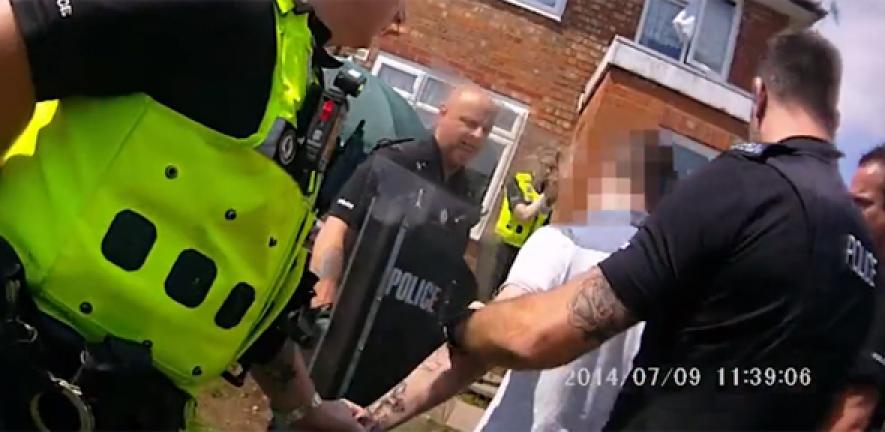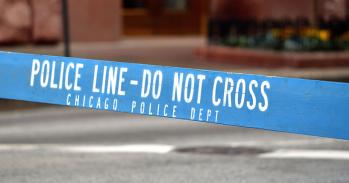
Preliminary results from eight UK and US police forces reveal rates of assault against officers are 15% higher when they use body-worn cameras. The latest findings, from one of the largest randomised-controlled trials in criminal justice research, highlight the need for cameras to be kept on and recording at all stages of police-public interaction – not just when an individual officer deems it necessary – if police use-of-force and assaults against police are to be reduced.
Preliminary results from eight UK and US police forces reveal rates of assault against officers are 15% higher when they use body-worn cameras. The latest findings, from one of the largest randomised-controlled trials in criminal justice research, highlight the need for cameras to be kept on and recording at all stages of police-public interaction – not just when an individual officer deems it necessary – if police use-of-force and assaults against police are to be reduced.
It may be that in some places it’s a bad idea to use body-worn cameras, and the only way you can find that out is to keep doing these tests in different kinds of places
Barak Ariel
New evidence from the largest-yet series of experiments on use of body-worn cameras by police has revealed that rates of assault against police by members of the public actually increased when officers wore the cameras.
The research also found that on average across all officer-hours studied, and contrary to current thinking, the rate of use-of-force by police on citizens was unchanged by the presence of body-worn cameras, but a deeper analysis of the data showed that this finding varied depending on whether or not officers chose when to turn cameras on.
If officers turned cameras on and off during their shift then use-of-force increased, whereas if they kept the cameras rolling for their whole shift, use-of-force decreased.
The findings are released today across two articles published in the European Journal of Criminology and the Journal of Experimental Criminology.
While researchers describe these findings as unexpected, they also urge caution as the work is ongoing, and say these early results demand further scrutiny. However, gathering evidence for what works in policing is vital, they say.
“At present, there is a worldwide uncontrolled social experiment taking place – underpinned by feverish public debate and billions of dollars of government expenditure. Robust evidence is only just keeping pace with the adoption of new technology,” write criminologists from the University of Cambridge and RAND Europe, who conducted the study.
For the latest findings, researchers worked with eight police forces across the UK and US – including West Midlands, Cambridgeshire and Northern Ireland’s PSNI, as well as Ventura, California and Rialto, California PDs in the United States – to conduct ten randomised-controlled trials.
Over the ten trials, the research team found that rates of assault against officers wearing cameras on their shift were an average of 15% higher, compared to shifts without cameras.
The researchers say this could be due to officers feeling more able to report assaults once they are captured on camera – providing them the impetus and/or confidence to do so.
The monitoring by camera also may make officers less assertive and more vulnerable to assault. However, they point out these are just possible explanations, and much more work is needed to unpick the reasons behind these surprising findings.
In the experimental design, the shift patterns of 2,122 participating officers across the forces were split at random between those allocated a camera and those without a camera. A total of 2.2 million officer-hours policing a total population of more than 2 million citizens were covered in the study.
The researchers set out a protocol for officers allocated cameras during the trials: record all stages of every police-public interaction, and issue a warning of filming at the outset. However, many officers preferred to use their discretion, activating cameras depending on the situation.
Researchers found that during shifts with cameras in which officers stuck closer to the protocol, police use-of-force fell by 37% over camera-free shifts. During shifts in which officers tended to use their discretion, police use-of-force actually rose 71% over camera-free shifts.
“The combination of the camera plus the early warning creates awareness that the encounter is being filmed, modifying the behaviour of all involved,” said principal investigator Barak Ariel from the University of Cambridge’s Institute of Criminology.
“If an officer decides to announce mid-interaction they are beginning to film, for example, that could provoke a reaction that results in use-of-force,” Ariel said. “Our data suggests this could be what is driving the results.”
The new results are the latest to come from the research team since their ground-breaking work reporting the first experimental evidence on body-worn cameras with Rialto PD in California – a study widely-cited as part of the rationale for huge investment in this policing technology.
“With so much at stake, these findings must continue to be scrutinised through further research and more studies. In the meantime, it’s clear that more training and engagement with police officers are required to ensure they are confident in the decisions they make while wearing cameras, and are safe in their job,” said co-author and RAND Europe researcher Alex Sutherland.
Ariel added, “It may be that in some places it’s a bad idea to use body-worn cameras, and the only way you can find that out is to keep doing these tests in different kinds of places. After all, what might work for a sheriff’s department in Iowa may not necessarily apply to the Tokyo PD.”

The text in this work is licensed under a Creative Commons Attribution 4.0 International License. For image use please see separate credits above.




